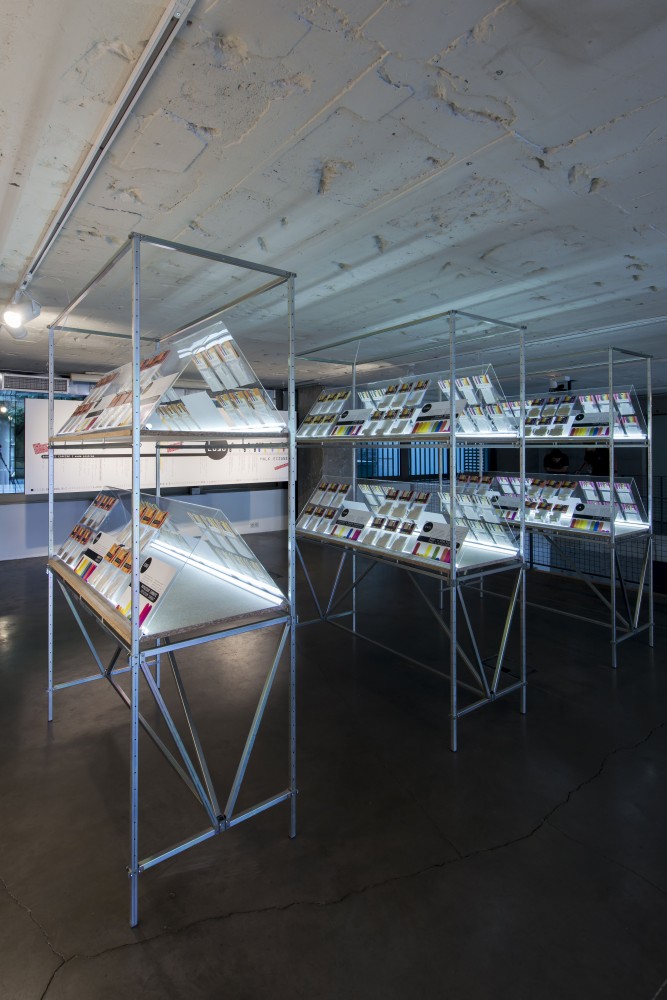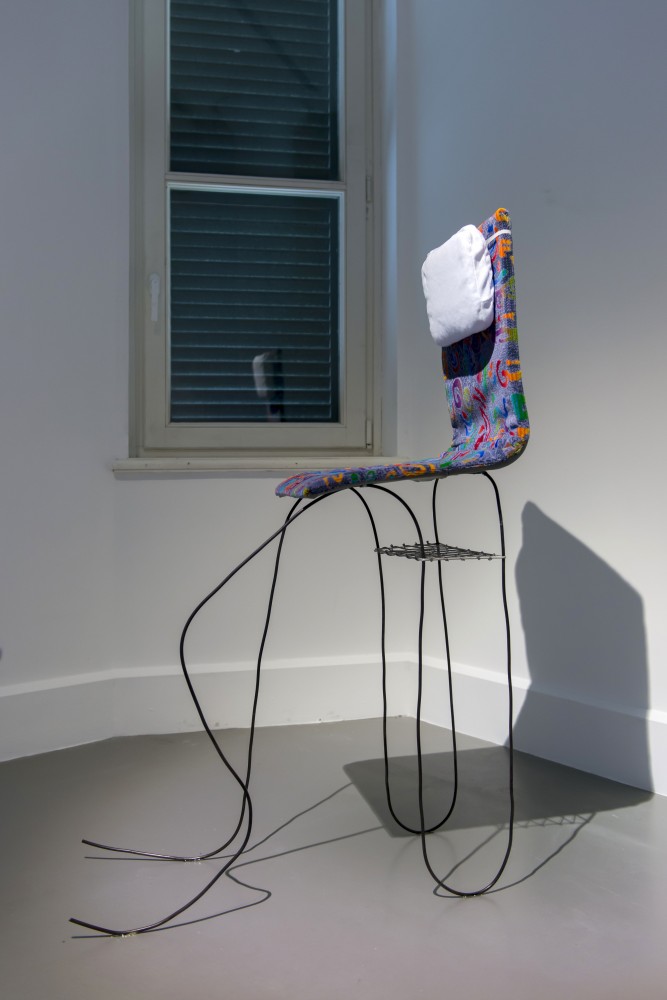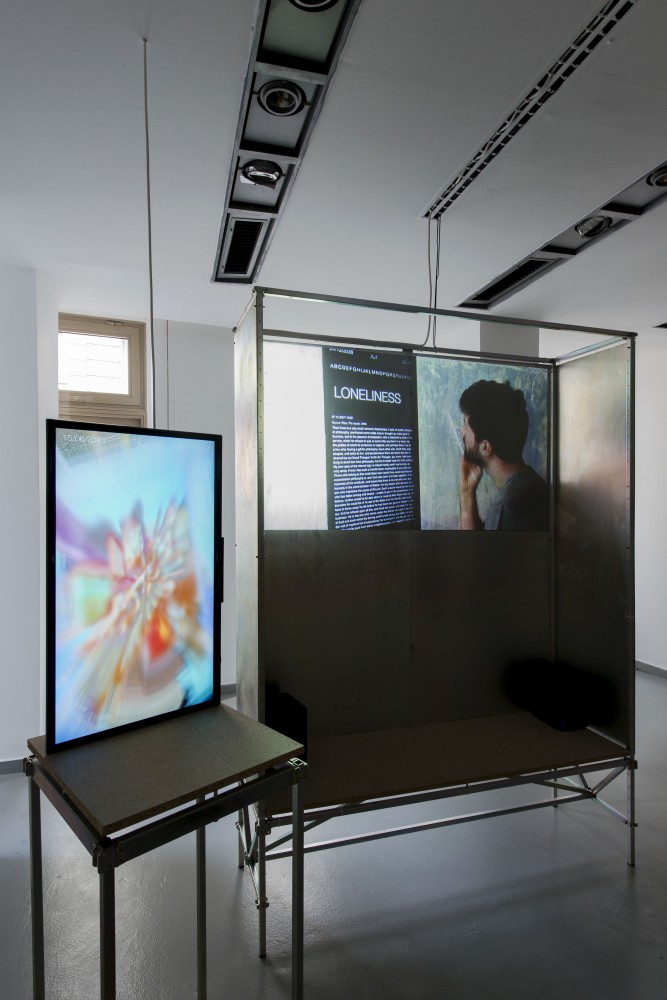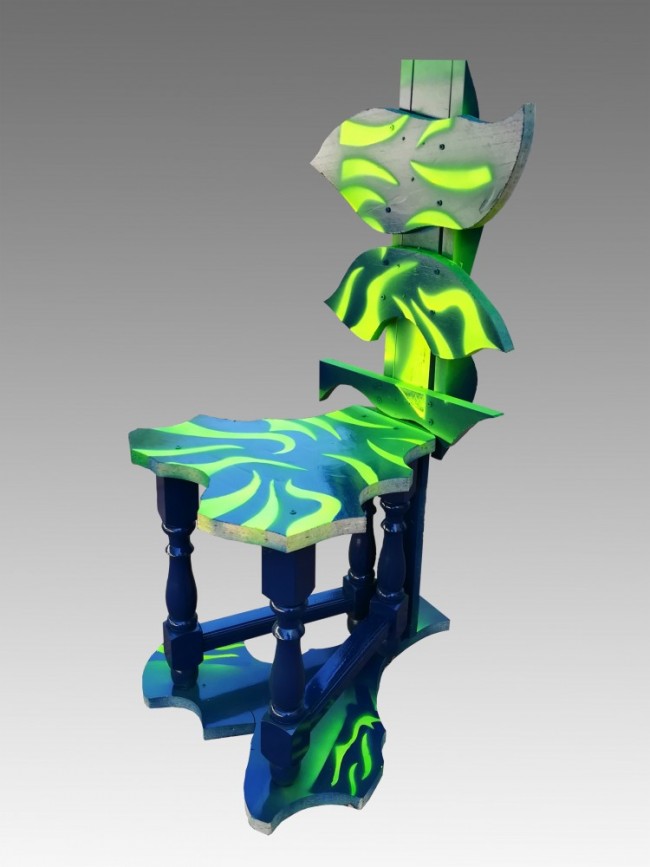An EDUCATIONAL U-TURN: Review of the 2018 Istanbul Design Biennial

Helga Schmid, Circadian Space (2018).
One of the most impactful models of design education of the last 100 years has been that of the Bauhaus, founded in 1919 in Weimar, Germany, by Walter Gropius. In an attempt to reconcile fine art with its estranged “applied” cousin, the state-run school of the Bauhaus posited a total utilitarian approach to all creative learning by prioritizing manual craftsmanship above everything else. Its mantra “the workshop will absorb the school” has haunted design pedagogies around the world ever since, pursuing a kind of functional pragmatism as well as a product-based solutionism that emphasizes productivity, innovation, and an output that is always “useful” — which in a capitalist economy has come to mean sellable. At the cusp of Bauhaus’ centenary, and in a radically transformed economic, social, and material world, would it not be time to propose a new paradigm for design education, one that focuses less on making solutions that will become the problems for the designers of tomorrow? So posits the fourth edition of the Istanbul Design Biennial, curated by the Belgian design curator, thinker, and educator Jan Boelen, with co-curators Nadine Botha and Vera Sacchetti. Under the title A School of Schools, the biennial imagines a range of new kinds of design learning, or learning as design, that transcends normative spaces of education, to ask how design itself can serve as a practice of knowledge-production. Through 120 included projects from designers, artists, architects, and educators, and divided into six sub-schools, the ambitious exhibition raises quite a few ambitious models (as well as quite a few unresolved political conundrums), about the purpose, value, and future of design education.
-

Eat Art Peoples Dispensary (2018).
-

Mae-ling Lokko, Nana Ofori-Atta Ayim, Selassie Ataditka, and Gustavo Crembil, Palaver + Palaver (2018).
As the Head of the MA Social Design in Eindhoven (and through his work at Atelier LUMA in Arles and Z33 in Hasselt), Boelen is known and respected for his ongoing development of “Social Design,” a contemporary sub-discipline of design pedagogy that, by drawing on the utopian spirit of 1960s radicalism, produces new, often speculative proposals on how to design for a “better life,” beginning with the relational, social space of the classroom. Very European, if not specifically Dutch in its tradition, this particular brand of design often involves project-based learning strategies, institutional collaboration, research, data analysis, and critical problem-solving, with a belief and enthusiasm in the viability of the systems that it at the same time aims to critique or change.
Re-casting a large-scale exhibition into a pedagogical space of learning directly evokes the so-called “educational turn” in art of the late 1990s, which first introduced pedagogical methods in/as curatorial/artistic practice and prioritized it over the presentation of object-based artworks. Imagining the Istanbul Biennial’s six venues as separate “schools” (Unmaking School, Scales School, Earth School, Digestion School, Current School, Times School), the exhibition spaces as classrooms, and the city’s streets as school corridors, the biennial effectively proposed a non-hierarchal and expanded learning space accessible to all, also in decentralizing the curating by inviting other people and groups to curate parts of the exhibition.
-

Sulsolsal, Demystification Committee the Offshore Economist (2018).
-

Navine Khan-Dossos, A School of Earthquake (2018).
Of the actual, if abstracted, schools featured was artist Navine Khan-Dossos’s A School of Earthquake (2018), a series of workshops held in Istanbul and Athens that set out to recall the 1999 earthquakes in Turkey and Greece, a rare moment of cross-border collaboration and support between the two feuding nations. The project used a natural disaster as a potential bonding device and as a pedagogical space fostering cross-cultural understanding and exchange. Similarly, Stitching Worlds (2014–18), an operation associated with the University of Applied Arts Vienna, unfolded as a four-year research project studying the connection between present-day computer technologies and traditional textile manufacturing, a largely ignored sphere of production that is historically female. In terms of “actual” schools, the New York-based School for Poetic Computation presented a screen-based display that made the self-organized institute’s funding structure completely available to all online, while the global and nomadic knowledge exchange Transitional School by Aformal Academy took the opportunity to produce a formal micro-retrospective of their prolific activities in Saigon, Doha, Bangkok, and Istanbul. In The Life of Things (2018), product designer Chris Kabel worked with design magazine MacGuffin to present a course to undergraduate design students in Switzerland, with students modeling their approach to the way in which MacGuffin themes its issues. These diverse projects engaged pedagogical models and asserted the biennial context as one of learning by focusing on process and peer-to-peer exchange “for its own sake.”
Of the six sub-schools that divided the exhibition across Istanbul, most efficient was Earth School, housed at the non-profit space Arter, focusing on our contemporary troubled relationship to nature and the planet. Responding to the overall “learning” framework, the collective Sulsolsal (Guido Giglio and Hannes Bernard) presented Staying Alive, a material, social and political study of disaster and crisis management, increasingly a practice among governments, groups, and individuals alike. The presentation presented speculative design projects alongside “survival merchandise” sourced from eBay and Amazon such as tech-aestheticized food kits and “nootropics” — powder and pill-based supplements that improve cognition, popularized in recent years by Silicon Valley software engineers. The project used humor and critical precision to show that the study of and the learning from design isn’t necessarily delineated to critical solution-driven projects, but should also include the study of “designed” commodities.

MacGuffin magazine, Life of Things (2018).
At Currents School, the focus laid on learning from contemporary networks and systems, particularly by materializing flows of information, people, or things through design methodologies. Maki Susuzki from the trans-disciplinary graphic design collective åbäke proposed a school devoted to the Fugu fish, a rare poisonous species native to Japan that began appearing off the coast of Turkey in 2003 due to global warming. While remaining a delicacy in Japan, the fish was, unsurprisingly, immediately branded an invasive species. Engaging architects, chefs, ethicists, and linguist, studying the Fugu opens up complex conversations about geopolitics, nature, and agency in a world of increasingly cemented borders. This critical method was echoed by CMP Office’s Open Sesame: Exercises in Entrepreneurship (2018), which took the Chinese factory-to-consumer e-commerce platform Alibaba as a case study for global production and consumption, focusing on its strange, allegorical relationship to the Syrian folk tale Ali Baba and the Forty Thieves from where it derives its name.
-

Åbäke, Fugu School (2018).
-

CMP Office, Open Sesame (2018).
There was clearly much to learn from the biennial’s theme A School of Schools, but it was precisely this elated spirit of cross-pollinating, innovative knowledge production that ended up materializing as the main problem of the exhibition. Important issues such as work, money, migration, and global warming addressed by “critical” design projects were on several occasions miraculously solved by speculative/propositional outputs in the form of objects, technologies, or business initiatives with a spirit of save-the-world progress — progress, importantly, through production. Global warming; ceramics 3D-printed using algae! Earthquake management: floating houses! The impending post-labor economy; a tea-making robot, ensuring more leisure time for workers! For a biennial that made many efforts in communicating that it wished to propose no quick fixes or easy solutions, the show was overwhelmingly abundant in investment-ready innovation design which, through the show’s sleek, totalizing exhibition display, ended up coming across most of all like a trade fair. Here, utopian social design provides the empathetic critical “spin” ensuring the heightened desirability of new solution-driven products. But is it really design’s objective always to propose a better world through production — and if so, what’s really changed since the utilitarian Bauhaus?

Legrand Jager, Deep Digital Twin (2018).
The problem, here, is, of course, the very notion of “learning.” “Everything and everywhere is school, and every single interaction we have with a design object is pedagogical,” the curators assert in their catalog essay, pointing to the abstract and increasingly normalized rhetoric of cognitive capitalism, where relational, spontaneous, and nonhierarchical activities such as “learning” serve as the very cornerstone of post-industrial production. It’s important to remember that innovation, creativity, collaboration, and cross-disciplinary thinking are not only doctrines of utopian design education, but also of Silicon Valley start-ups and the ever-more precarious freelance economy — spaces of 100% rampant production that may be cloaked differently than Bauhaus-era industrialism, but serve the same ultimate purpose. The “un-making” of school (which one of the exhibition venues was titled), seems, then, to inadvertently (and rather bleakly) refer to the undoing of the welfare state and its sanctioned spaces of non-work (school, derived from the Greek word skholē, famously connotes leisure and philosophy) to a corporate, post-Fordist dystopia where “learning” is a branded sticker applicable to any capitalizable instance of cognitive production. In a time where education is increasingly privatized and made into a luxury commodity, it seems dangerous to opt for more decentralization, more abstraction, more “expanded learning webs.”
-

Nina Wiesnagrotzki, Chinese Seismic Investigation (2018).
-

Camilo Oliveira, Talking to My Digital Self (2018).
-

Matylda Krzykowski and Annika Frye, Mutheius Parallax (2018).
“In a time of post-industrialism and cognitive capitalism, we are still talking about making human potential productive for someone, for somebody, for something,” concludes design professor Claudia Mareis poignantly in her contribution to the exhibition catalog. “It’s hard to think of creativity without the context of production,” she continues: “In design education as it exists today, creativity is still bound to this context, as we are living in times of a post-industrial knowledge economy that aims to render all kinds of cognitive labor and personal knowledge productive.” In really trying to imagine a post-Bauhaus design education, perhaps the real question should be: what does it mean to not design, to do anti-design or a design that refuses to work or to participate in an environmentally unsustainable economy that continues to exclusively be concerned with productivity and growth? In enthusiastically trying to write the heterogeneous syllabus for a design school future, the Istanbul Biennial’s A School of Schools ultimately can’t help but stumble over the fundamental problem at the heart of the Speculative/Relational/Social Design nexus and its role in a larger material politics of a crumbling world.
Text by Jeppe Ugelvig for PIN–UP Online.
All images by Kayhan Kaygusuz.




